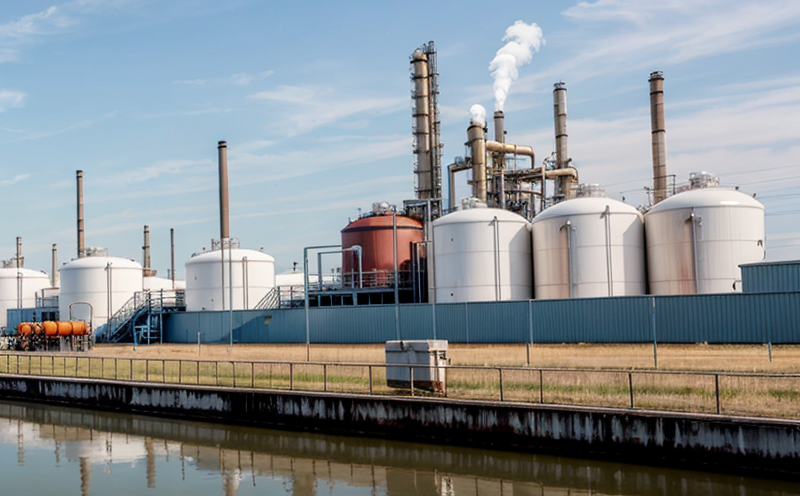EN 13501 Fire Reaction Safety Testing of Construction Products
The EN 13501 series of standards provides a comprehensive framework for assessing the fire behavior, smoke production characteristics and toxicity of construction products. The most relevant standard within this series is EN 13501-1: "Fire reaction classification of building materials and products - Part 1: Classification according to burning behaviour". This service focuses on the specific testing requirements outlined in this part for assessing the fire performance of construction products.
EN 13501-1 classifies construction products based on their burning behavior into three categories: A1, A2 and B. The classification is determined by subjecting test specimens to a series of standardized flaming and non-flaming tests under controlled conditions. The key parameters measured include flame spread index (FSI), smoke production rate and toxicity.
The testing process involves preparing the construction product according to EN 13501-1 guidelines, mounting it into an appropriate holder, and placing it in a specialized furnace known as the TNO burner. The specimen is then subjected to both flaming and non-flaming tests under well-defined conditions. During these tests, various parameters such as heat release rate (HRR), smoke production rate, oxygen consumption, carbon monoxide concentration, and other toxic gases are continuously monitored.
The results of these tests are used to determine the fire performance class of the product. A1-rated products exhibit a low flame spread index and minimal smoke production under both flaming and non-flaming conditions. These materials can be used in high-risk areas such as hospitals, schools, and other public buildings where fire safety is paramount.
A2-rated products have higher flame spread indices and greater smoke production than A1-rated products but still meet acceptable limits for use in lower risk environments. B-rated products are those that do not meet the stringent requirements of either A1 or A2 classifications and should generally be avoided for critical applications involving fire safety.
This testing is crucial for ensuring compliance with building codes and regulations worldwide, particularly in Europe where it plays a significant role in determining whether materials can be used in construction projects. By providing accurate data on the fire performance of construction products, this service helps manufacturers develop safer, more reliable materials that contribute to overall fire safety.
Our laboratory adheres strictly to EN 13501-1 standards throughout all stages of testing, ensuring consistent and reliable results. This includes proper specimen preparation, precise measurement techniques, and rigorous quality control measures. Our highly skilled technicians ensure that each test is conducted under optimal conditions, minimizing variability and maximizing accuracy.
In addition to our expertise in conducting these tests, we also offer interpretation services for clients seeking guidance on how best to incorporate the results into their product development processes or regulatory submissions. Our team of experts can help interpret the data obtained from EN 13501-1 testing and provide recommendations for improving fire performance if necessary.
By offering this service, we aim to support our customers in meeting stringent regulatory requirements while simultaneously enhancing the safety and reliability of their products. Whether you're a manufacturer looking to ensure compliance with international standards or an architect designing safer buildings, our EN 13501-1 testing services can provide valuable insights into your product's fire performance.
Customer Impact and Satisfaction
- Enhanced Regulatory Compliance: Ensuring that all construction products meet the stringent requirements set forth by EN 13501-1 helps our clients avoid potential legal issues and penalties associated with non-compliance.
- Improved Product Quality: By identifying areas where improvements can be made to enhance fire performance, we help manufacturers produce higher quality materials that better meet market demands.
- Better Decision Making: Providing clear, actionable data through our testing and interpretation services allows stakeholders in the construction industry to make informed decisions regarding material selection and design modifications.
The feedback from our clients reflects their appreciation for the detailed reports we generate after each test. These comprehensive documents not only summarize the key findings but also offer practical advice on how to address any shortcomings identified during testing. This level of service has earned us a reputation as a trusted partner in the field of industrial chemical safety testing.
Environmental and Sustainability Contributions
The EN 13501-1 fire reaction tests play an important role in promoting sustainable building practices by encouraging the development of products that contribute positively to indoor air quality. Products classified as A1 or A2 are less likely to release harmful chemicals into the environment, contributing to healthier living spaces for occupants.
Additionally, manufacturers who invest in improving their product's fire performance often find opportunities to reduce waste and improve resource efficiency throughout their supply chains. For instance, optimizing formulations can lead to reduced usage of raw materials without compromising on performance characteristics.
Our EN 13501-1 testing service aligns with broader sustainability goals by supporting clients in meeting environmental standards set forth by organizations like the European Commission and other international bodies. This commitment to sustainable practices enhances our reputation as a responsible corporate citizen within the industry.
Use Cases and Application Examples
The EN 13501-1 fire reaction tests are applicable across various sectors including residential, commercial, industrial, and public infrastructure. Here are some specific use cases:
- Residential Buildings: Ensuring that common materials used in homes such as insulation boards, ceiling tiles, and wall panels meet the required classifications.
- Commercial Spaces: Verifying the fire safety of office furniture, partitions, and other interior fittings used in retail stores and offices.
- Industrial Facilities: Assessing the suitability of structural components like steel beams and concrete slabs for use in factories and warehouses.
- Pubic Infrastructure: Confirming that materials utilized in transportation hubs (e.g., train stations, airports) comply with strict fire safety standards.
These tests are particularly important when designing new structures or renovating existing ones. They help architects and engineers select appropriate materials based on their fire performance characteristics while adhering to local building codes.





